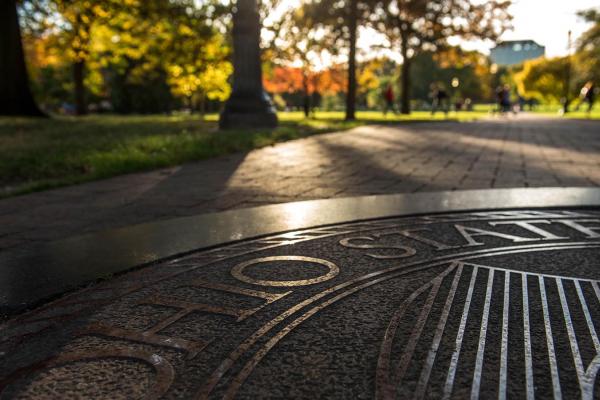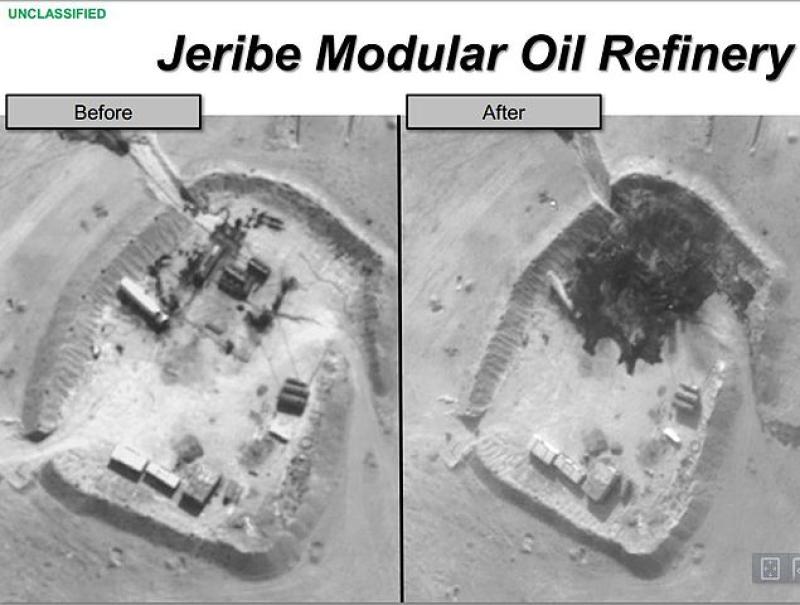Financing Terrorism

by Gabriel Giddens
In March we held a symposium that addressed the complex issues associated with extremist jihadi groups in the Middle East. The entire symposium can be viewed here. This post will look at one of the issues discussed during the event, financing terrorism.
The economic dimension is a facet of terrorism that is seldom analyzed in mainstream news, although the flow of money is essential for terrorist organizations to carry out operations. With the rise of the Islamic State, and the emergence of stories of the groups role in the black commodities market, there is growing interest in how these financing operations can be combatted. This post will discuss the current state of Islamic State financing, beginning with an overview of how terrorist financing traditionally works.
Financing Strategies
The principal strategies that foreign terrorist organizations use to finance include external financiers, front companies, black markets, taxes, and extortion [1]. Charity, being a pillar of Islam, was once the primary source for many groups in the Middle East – terrorist, political, humanitarian, etc. [2]. It has since declined in important for terrorist organizations, relative to other strategies.
External financing – Financiers are typically individuals that have no intimate or public relationship with a terrorist organization, but attempt to send monetary and material support through back-channels. As an example, two Qatari nationals were identified last year by the United States for attempting to send money to the Islamic State [3].
Front companies – Front companies can either be indirectly connected to the terrorist organization, run by sympathizers, or run specifically by operatives from a terrorist organization. Their role is to function like a normal business, but launder their money and funnel it into accounts for terrorist operations. This is typically used by organizations that have sophisticated networks and backing from higher authorities. Lashkar e Taiba in Pakistan, for example, is believed to be supported by a variety of front companies [4].
Black markets – Black markets are any unauthorized trading space where criminals can trade assets beyond oversight of international legal authorities. This is essential for terrorist organizations to sell their seized assets, albeit at a lower price than market value [5].
Taxes – If a terrorist organization has control over territory, it has ostensible authority to collect taxes of those within their area of control. It does, however, require sufficient control of a territory that collection can be carried out in an orderly fashion.
Extortion – Terrorist organizations, quite simply, seize assets of individuals living in territory they control and move through [6]. They do this by force, and it currently generating the largest portion of their wealth [9]. Part of the Islamic State’s ability to do this, is their control over infrastructure, such as electricity and transport of food supply. According to Juan Zarate of the Center for Strategic and International Studies, we have to “dislodge them from their resources on the ground”, in addition to cutting off their external cash flows [21].
State of Islamic State Financing
The Islamic State has been described as the world’s richest terrorist group [7]. It was reported in late 2015 that the group was bringing in $500 million in oil alone [8]. However, perhaps surprisingly, oil not the Islamic State’s largest source of income. U.S. airstrikes on refineries (see image below) have reduced the amount of production [20], and their other sources of income further reduce oil’s importance. According to financial documents leaked by an Islamic State insider, the group’s primary source of money is extortion [9]. Fossil fuels and taxes are close behind. The report indicates that the confiscations include houses, vehicles, money (beyond taxes), land, and cattle [10].

U.S. Airstrikes "Before and After" Pictures from the U.S. Department of Defense, Wikimedia Commons, Public Domain.
It has also been reported over the last year that ISIS is selling art and antiques seized from historical sites in Iraq and Syria, and selling them on the black market [11]. It does not make up a substantial portion of their income, but it serves as yet another difficult to target financing operation.
The Islamic State has maintained considerable diversity in financing, which is perhaps why it has been so difficult for international authorities to cut off the group’s money flow. It is difficult to impede extortion and taxation within their territory of control through external means. However, a lot has been done to target Islamic State financing – and it is beginning to working.
The anti-Islamic State coalition forces seem to have taken a two-pronged approach to cutting off Islamic State finances. First, coalition forces have carried out extensive air strikes and supported raids against oil refineries and other sites associated with fossil fuel operations [12]. This has considerably slowed oil operations in recent months.
Second, the United States operates a number of anti-money launder and counter-terrorist financing programs that freeze assets using international monetary databases [13]. While not confirmed, it is likely that these programs, including the Terrorist Finance Tracking Program of the Department of the Treasury, have gone a long way to closing off external financiers and front companies.
As a result of the aforementioned air strikes and counter-terrorist financing operations, the Islamic State’s finances have begun to decline, as of the first quarter of 2016 [14]. As articulated by researcher Patrick Johnson at the RAND Corporation, “coalition airstrikes, economic downturns in both Iraq and Syria and historically low global oil prices have combines to hit the group where it hurts the most” [15]. These problems are further exacerbated by the sustainability of taxes and extortion. The Islamic State has been losing territory in Iraq and will likely lose the key city of Mosul, along with its proximate oil fields, in the future [16] [17]. This will dramatically weaken its ability to confiscate assets, collect taxes, and sell on the black market to support its operations.
Now, there is still some concern that regional actors are not pulling their weight with respect to combatting Islamic State financing. Turkey in particular has been criticized for, at the very least, turning a blind eye to the oil that is smuggled into the country and sold at below-market prices [18]. At any rate, while it would help the global effort tremendously if Turkey cracked down on oil smuggling, it may not be necessary in the long-run should current trends continue. In fact, there may be a greater threat from the Islamic State in Libya, rather than Iraq and Syria.
Sources:
[1] http://www.fatf-gafi.org/media/fatf/documents/reports/FATF%20Terrorist%20Financing%20Typologies%20Report.pdf
[2] http://www.cfr.org/terrorist-financing/tracking-down-terrorist-financing/p10356
[3] http://www.thenational.ae/world/americas/us-names-two-qatari-nationals-as-financiers-of-terrorism
[4] http://www.theguardian.com/world/us-embassy-cables-documents/220186
[5] http://dailycaller.com/2016/03/21/high-cigarette-taxes-and-black-market-tobacco-are-funding-global-terrorism/
[6] http://www.brookings.edu/blogs/markaz/posts/2014/10/24-lister-cutting-off-isis-jabhat-al-nusra-cash-flow
[7] https://risk.thomsonreuters.com/infographic/islamic-state-how-worlds-richest-terrorist-organization-funds-its-operations
[8] http://www.bloomberg.com/news/articles/2015-11-19/why-u-s-efforts-to-cut-off-islamic-state-s-funds-have-failed
[9] http://www.vocativ.com/237919/isis-bulging-cash-cow-shakedowns-not-oil-and-artifacts/
[10] http://www.businessinsider.com/isis-taxation-extortion-system-2015-12
[11] http://www.cbsnews.com/news/isis-looted-syrian-ancient-artifacts-black-market-us-and-europe/
[12] http://www.nytimes.com/2015/11/13/us/politics/us-steps-up-its-attacks-on-isis-controlled-oil-fields-in-syria.html
[13] https://www.treasury.gov/resource-center/terrorist-illicit-finance/Terrorist-Finance-Tracking/Pages/tftp.aspx
[14] http://www.ibtimes.com/isis-losing-money-islamic-state-money-storage-sites-destroyed-us-airstrike-bombings-2358496
[15] http://www.rand.org/blog/2016/03/the-islamic-states-money-problems.html
[16] http://www.cnn.com/2016/04/06/middleeast/road-to-mosul-advance-on-isis/
[17] https://www.washingtonpost.com/world/middle_east/islamic-states-money-makers-take-a-hit-as-it-loses-territory/2015/12/03/b08910aa-91f6-11e5-befa-99ceebcbb272_story.html
[18] http://www.bbc.com/news/world-europe-34973181
[19] http://www.wsj.com/articles/iraq-asks-u-s-led-coalition-to-help-prevent-islamic-state-destruction-of-antiquities-1425850270
[20] https://www.washingtonpost.com/news/wonk/wp/2015/11/18/how-isis-makes-its-money/
[21] CSIS Podcasts, Tracking ISIS Part II: The Isis Economy: https://soundcloud.com/csis-57169780/tracking-isis-part-ii-the-isis
